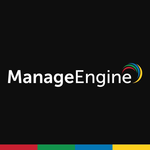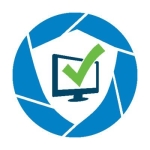What is our primary use case?
Qualys has a scanning tool for viruses, vulnerability, and malware detections. They recently launched Qualys Patch Management for patching applications or server sites. We previously used tools like SCCM or Microsoft Intune. Qualys Patch Management is a replacement for all those kinds of tools, but we mainly use it for patching the applications, not the servers.
How has it helped my organization?
If a server has two applications, and one has a patch and the other one does not have a patch, you do not need to worry. You just select the server and the patches you want to deploy. If you have selected four patches but only two are applicable, it will only deploy the ones that are applicable. The other two are skipped so that there are no issues or errors with the existing image. That is an advantage of this solution.
There is no automation. You have to manually create a job. There is a scanned report, and based on that, you can select a patch or server. You can select multiple servers or multiple patches.
We have used the solution's Risk Reduction Recommendation Report. After the remediation, we run the scan again. It is simple.
Using Patch Management, we have not seen any improvement in our patch rates.
What is most valuable?
For a few applications, you do not need to go and download the patches from the network or somewhere else. They have the patches or the latest updates in the directory. You can just select a patch and deploy it to a server. You can create a patch job and select the patch. Everything is within the interface. You do not need to go out of it.
It is user-friendly. It is not complex.
What needs improvement?
The Qualys Scanning tool is one of the best tools for scanning purposes, virus detection, and vulnerability detection, whereas Qualys Patch Management is helpful only in a few cases, not in all cases.
There are multiple tools for patching, such as SCCM, Intune, or Ivanti. One of the challenges that we have faced with the Patch Management tool is that you cannot patch all the things. There are some limitations, whereas, in SCCM, we can create a package and just deploy that through it. Anything is deployable through SCCM, whereas Patch Management is very selective. They should support more applications. For example, you cannot push a patch on Oracle.
There is not much automation. For example, with SCCM, you can push anything, but that is not the case with Qualys.
We have faced a few corruptions while patching. Even though a patch is feasible through Qualys Patch Management, when we try to push it to our servers, we face some errors or interruptions. When we push the patch, something gets blocked and the patch fails. Even if the patch is within the directory of Qualys, we cannot push it. There are some errors.
The Qualys support team can be more communicative. Just sharing a knowledge-based article does not help all the clients or all people. A knowledge-based article might be useful for a technical person, but it does not help someone who is not very technical. They should have a call-based approach. Even companies like Microsoft provide an option for a call for a support case, which allows you to discuss the issue and troubleshoot it quickly. Qualys should improve their support.
For how long have I used the solution?
I have been using this solution from the beginning or since it was launched. It was launched recently. It has been one to two years.
What do I think about the stability of the solution?
It is stable. I would rate it a nine out of ten for stability.
What do I think about the scalability of the solution?
I would rate it a ten out of ten for scalability. Its scalability is very good. It can be expanded, but it also depends on the licensing part.
It is being used for the whole organization for patch management. We have 70 to 80 users using this solution.
How are customer service and support?
We faced challenges with their support for the issues that we raised. When you raise a case, they just share a knowledge-based article with you. It is very tough to catch them over a call and have a live troubleshooting session to understand the issue. You cannot just be dependent on the knowledge base articles. Sometimes, you have to go in-depth and do research to understand the cause of the issue. Their support team was not very helpful or communicative.
The experience might vary based on the priority of the case. It might be different when you have a high-priority case. The cases that we raise are at P3 or P4 levels because we are not completely dependent on Qualys Patch Management. For a P1 or P2 case, they might have a different approach.
How would you rate customer service and support?
Which solution did I use previously and why did I switch?
Previously, we were using Ivanti and SCCM. They are more comprehensive, and you can push anything. You can even create a script or a package and push it through them, and it will be deployed on all the servers. Qualys Patch Management is very limited compared to SCCM, Intune, or Ivanti. Having said that, it is quite new. It was launched one or two years ago. They need some time to improve their services.
How was the initial setup?
Its deployment is straightforward.
We have both cloud and on-prem servers. We do patch deployment on both. We can do an immediate deployment or a scheduled deployment. It takes time based on the application size, server count, etc. If the file is of a few MBs, it does not take more than one or two minutes. If it is a huge file, then it will take longer, but everything is reasonable. I have not seen any delays. The run time is good. It is not an issue. The only issue is that a few blockers need to be corrected.
It does not require much maintenance, but the support should be better from their side.
Once you have deployed a job, it runs automatically. You need to go and check it only if there is a failure. You do not need to manually manage anything. Once a job is created, it runs automatically at a scheduled time. All that is automatically done at the backend.
What's my experience with pricing, setup cost, and licensing?
It is affordable, but they should provide features as per the rate they are charging. We have a big infrastructure with about 80,000 licenses. We expect better support from the Qualys team. So, it is affordable, but more features should be there, and the support should be better.
What other advice do I have?
At this time, I would not recommend Qualys Patch Management because there are multiple features that need to be developed from their end. You cannot deploy everything through it. I might recommend it in the future. It needs some time to be fully developed.
I would rate Qualys Patch Management a six out of ten because of the support quality and lack of features.
Disclosure: My company does not have a business relationship with this vendor other than being a customer.
















